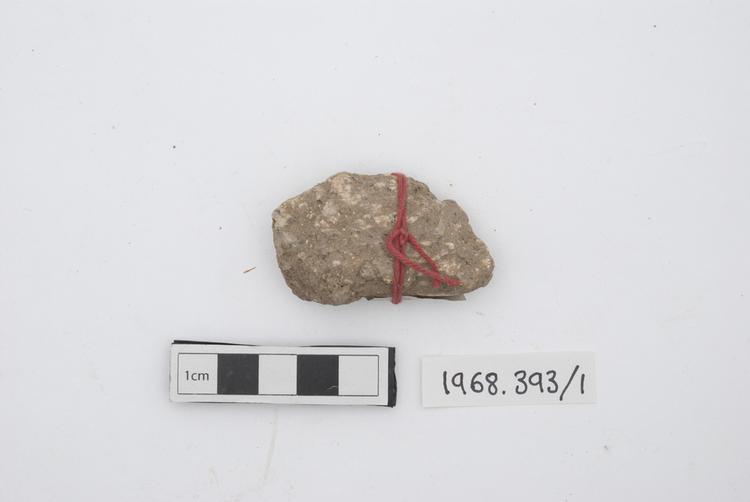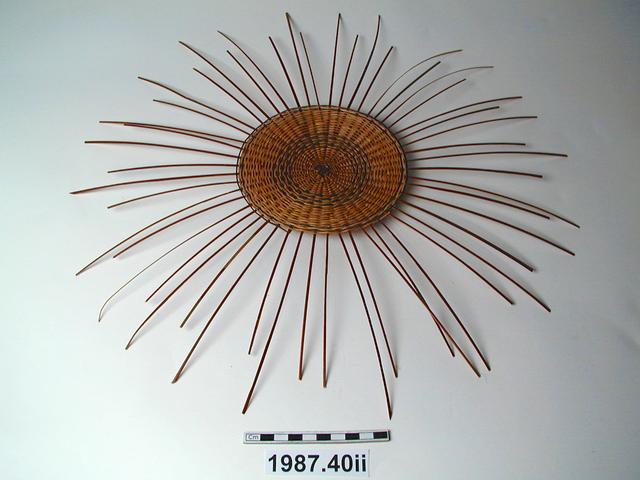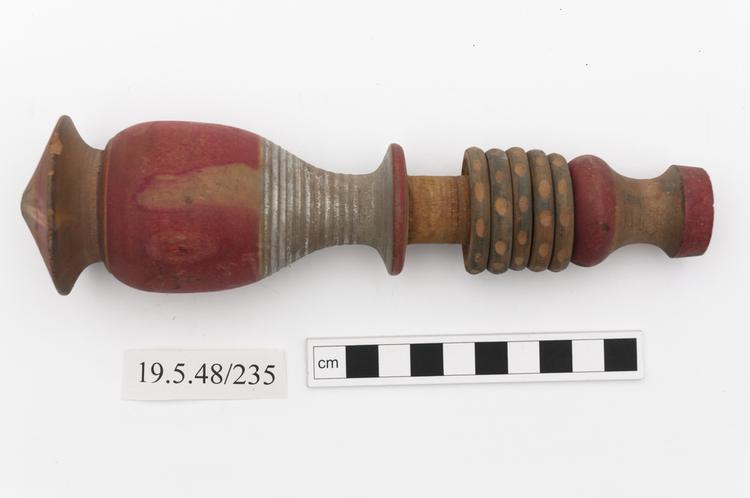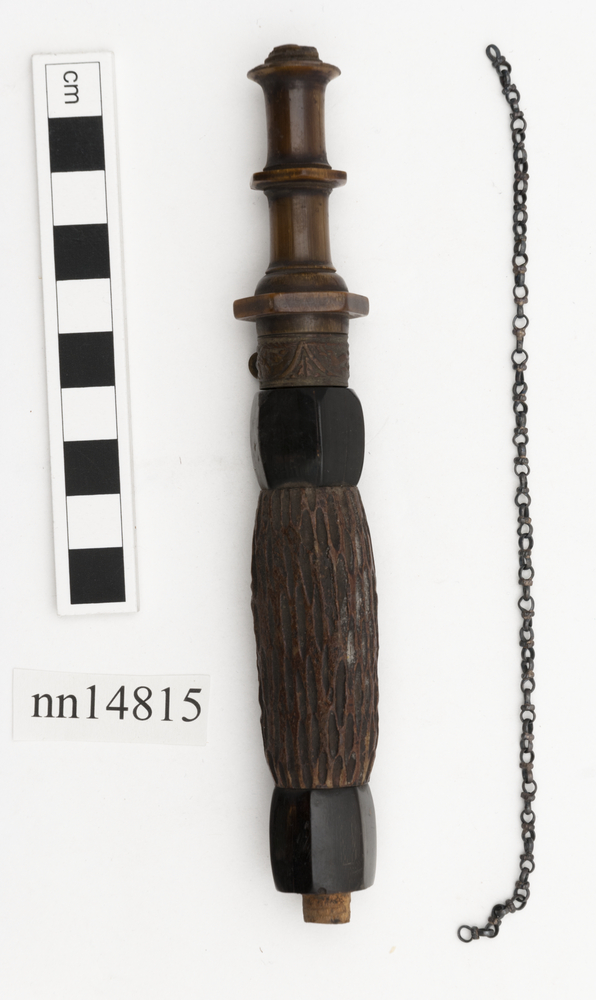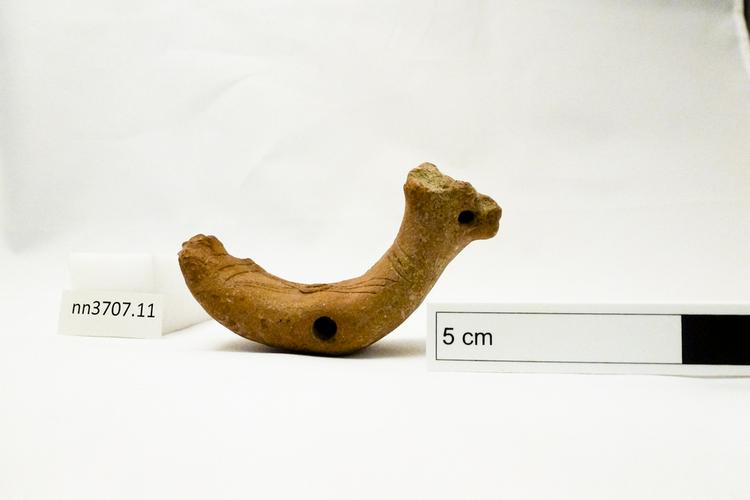
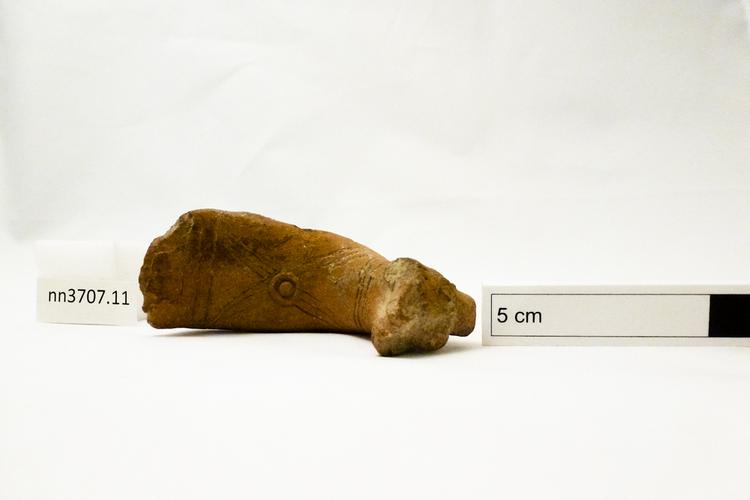
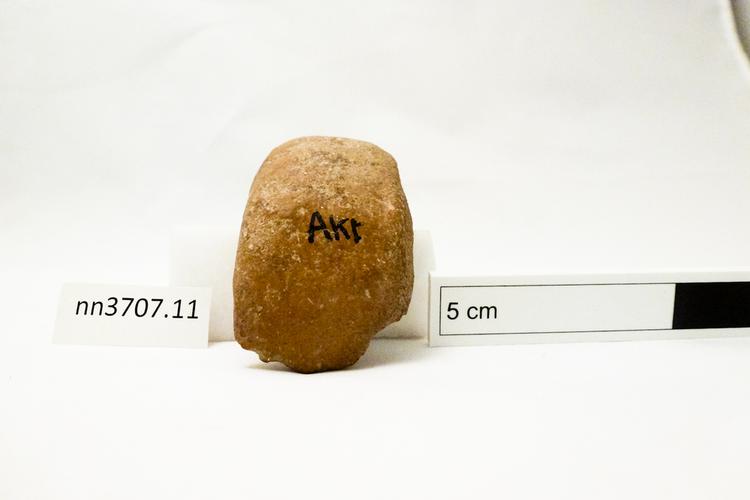
Composite clay animal, probably a combination of a bird’s body and a bovine head. The body is decorated on the back with a double stranded cross belt with a punched ornament in the middle and at the neck and below the now broken tail with a pairs of horizontal incised lines, none of them exending to the underside. The head seems to have been horned, with those devices now lost. At the flat muzzle and in the middle of the body the animal is pierced through with holes from side to side. The lower hole must be for a spindle or axle for the attachment of wheels and the one at the head probably to provide a means for pulling the animal along. This device is surely a child’s toy.
A composite animal, probably a combination of a bird’s body and a bovine head. The body is decorated on the back with a double stranded cross belt with a punched ornament in the middle (like the crossbelts worn by female figurines at Sar Dheri) and at the neck and below the now broken tail with a pairs of horizontal incised lines, none of them exending to the underside. The head seems to have been horned, with those devices now lost. At the flat muzzle and in the middle of the body the animal is pierced through with holes from side to side. The lower hole must be for a spindle or axle for the attachment of wheels and the one at the head probably to provide a means for pulling the animal along. This device is surely a child’s toy and it is of a type well known in the ancient South Asian world. The underside is marked in black ink with ‘Akt’ (probably Akhtar Dheri, an ancient site on the Kabul River, south of Charsadda in Khyber-Pakhtunkhwa, Pakistan). Akhtar Dheri has not been reported upon since the days of Col Gordon and there is every likelihood that it no longer exists. Early Historic Period, circa 1st century BCE or CE. Archaeological context: presumably unstratified and from a surface collection. Given by Col D H Gordon (1952/3).



